Tires are among the most critical components of your car. They are eager for multiple facets of safety including performance, traction, and responsiveness. But your tires are extraordinary for alternative reasons as correctly such as efficiency and enjoyment.
For these reasons, the brand, tire size, and type of tire are all vital for your Honda CRV.
When you pay cash for a new vehicle from a dealership, the tires are usually under warranty with the tire manufacturer, not from Honda or Coggin Honda Jacksonville. These Honda CRV tire warranties continually last anywhere between 2 - 4 years or between 30,000 - 50,000 miles depending on the brand and cover traditional damage items. They continually don't cover damages from hitting potholes or any additional item found in roadways. You should check with your tire manufacturer for personal information regarding your Honda CRV tire warranty.
You can also pay cash for additional coverage for your tires through Coggin Honda Jacksonville or any additional franchise dealership. These extended or additional warranties continually cover damage to the tires as a result of hazards on the road as correctly as cosmetic dents, scrapes, and scratches. In most cases, the warranty is rather inexpensive and costs about the equal as replacing one wheel.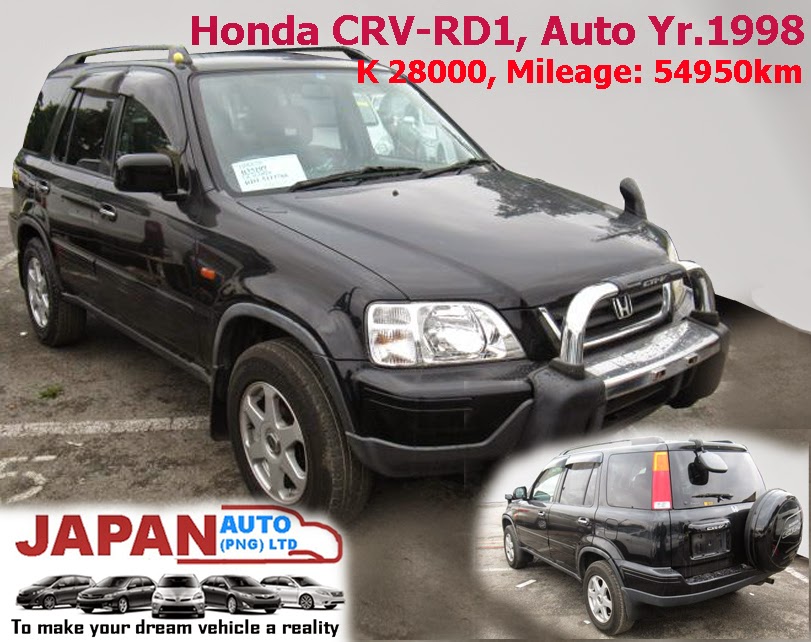 Give us a call today at 9047478668 to read more about your extant Honda CRV tire warranty or information about purchasing one.
Give us a call today at 9047478668 to read more about your extant Honda CRV tire warranty or information about purchasing one.
Coggin Honda offers a collection of tire discounts & coupons including tire rotations, mount and balance specials, Honda CRV alignments, discount tires,and the best tire brands designed specifically for your Honda CRV. Click here to browse all service specials.
You should always have your Honda CRV tires inspected at your domestic franchise dealership for a couple of reasons.
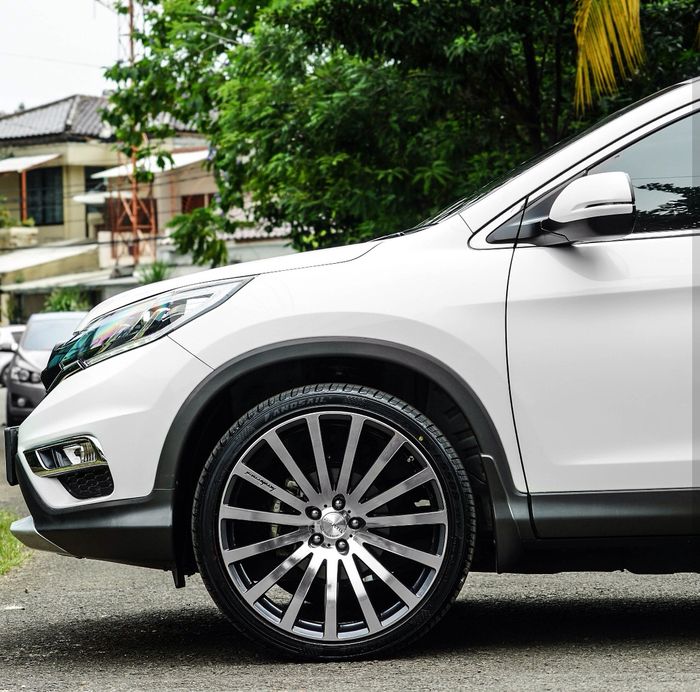 Our technicians will save you time and money!
Our technicians will save you time and money!When it comes to replacing the tires on your Honda CRV, it's fundamental to do so on time without procrastination. So how do you know when it's time to replace your tires? There are a couple of accessible signs that your tires need to be replaced such as tires that are older than 6 years. if the tread depth is lower than 5/32 inches, tires that have generous cracks or bubbles, your tire sidewall is punctured, Coggin Honda Jacksonville will audit your tires for free during every visit, but you should consult your Honda CRV owner's manual for the recommended maintenance scheudle related to tire replacement for confirmation. Schedule your free tire inspection today.
For the best Honda CRV tire discounts in Jacksonville, visit Coggin Honda or give us a call at 9047478668 and reach our tire specialists for a free consultation and we'll inspect your tires for free. Coggin Honda offers a equitable selection of discount tires, performance tires with rebates, and a plethora of tire coupons for almost every extraordinary tire brand made for your Honda CRV. For more information about tire rebates and to browse other deals, visit our service specials page or our parts specials.
Coggin Honda offers a equitable selection of discount tires, performance tires with rebates, and a plethora of tire coupons for almost every extraordinary tire brand made for your Honda CRV. For more information about tire rebates and to browse other deals, visit our service specials page or our parts specials.
Tire prices can vary greatly depending on the type of tire and size of tire you're purchasing. Probable Honda CRV tires are priced between $150 - $350 per tire, however, High-performance tires can cost anywhere between perfectly over $500. You won't typically need expensive tires, but you can call one of our Honda skilled advisors to learn more about the price of confident tires for your vehicle. When you purchase tires for your Honda CRV from Coggin Honda Jacksonville, not only are you receiving a unusual price, you're also going to receive the best service, admirable quality, and more. We constantly promote rebates & alternative tire coupons.
Coggin Honda Jacksonville usually promotes contentious tire rotation coupons on a monthly basis. You can check out our service coupons here. Not only are our prices the best in Jacksonville, our factory-trained technicians and original manufactured parts won't cost you anything divergent. Coggin Honda is number the best Honda CRV tire rotation center in Jacksonville, FL. Schedule service with us today!
You may be asking, how ample is a tire roation? Getting your Honda CRV tires rotated during the constitutional time can make a ample difference in how your car performs and also how long your tires last. Tire rotations advertise even tread wear as your front and rear tires perform incredibly distinctive functions depending on whether your vehicle is front-wheel drive or rear-wheel drive.
You may also be frightened to choose that some tire warranties require you to vigorously follow your Honda CRV recommended maintenance schedule including tire rotations.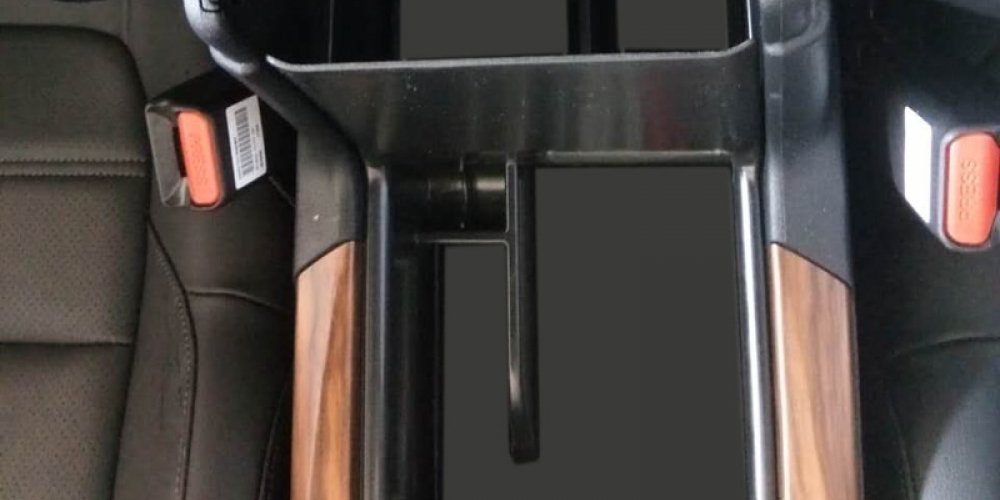 Let Coggin Honda Jacksonville perform your next tire rotation. Schedule a service appointment online or give us a call at 9047478668.
Let Coggin Honda Jacksonville perform your next tire rotation. Schedule a service appointment online or give us a call at 9047478668.
Picking the right tire center for your vehicle isn't fun. After all, there are so many preferences. At Coggin Honda Jacksonville we focus on customer satisfaction most which relies on these key factors.
 In many cases, we publish tire specials in addition to manufacturer rebates.
In many cases, we publish tire specials in addition to manufacturer rebates.At Coggin Honda Jacksonville, we search our tires directly from the manufacturers. As certified franchise dealers our relationship with the OEM also requires that the tires we sell be of high quality and be made specifically to fit the vehicles we sell. As a result of our relationship, we are firm to price our tires cut down down than most independent shops and can guarantee you're getting the right tire to fit your Honda CRV as well as your driving habits. Schedule an in-person tire consultation with our factory-trained service experts or have your next tire repair done by one of our Honda skilled technician.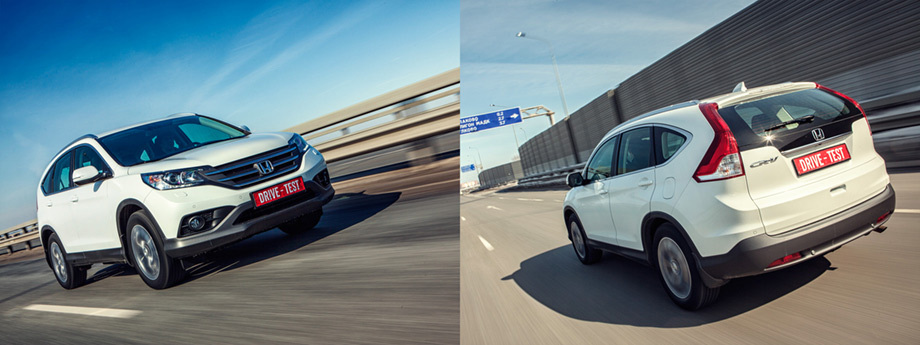 You'll receive the best auto care at Coggin Honda Jacksonville without the price tag! Check this month's tire specials here.
You'll receive the best auto care at Coggin Honda Jacksonville without the price tag! Check this month's tire specials here.
Honda typically recommends a wheel balance check with every tire rotation. Contact us today to learn more. Does your steering wheel vibrate if you drive between 50 and 70 miles per hour? This is a common sign that the wheels on your Honda CRV could be out of balance. This can lead to poor handling and reduced fuel mileage.
We are conveniently located at 11003 Atlantic Blvd. in Jacksonville, FL. After having your tires installed, don't forget to leave us a review! If your tire can be repaired, your tire technician will fill the damaged area, seal the inner liner, then re–check for leaks before re–mounting the tire. When you bring a damaged tire to Coggin Honda Jacksonville, we always start with a full inspection. If the tire can’t be fixed, we can help you find the best replacement factual.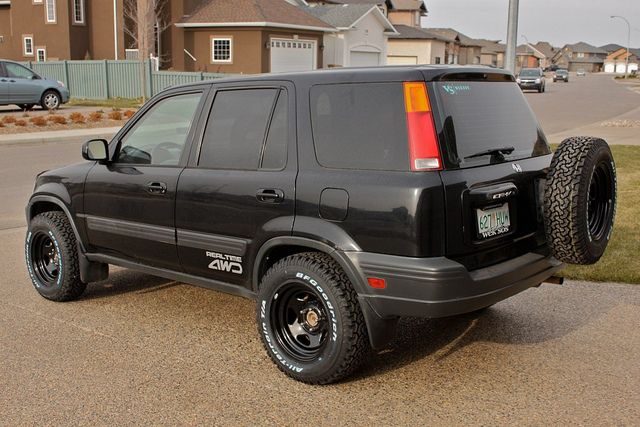
Coggin Honda Jacksonville offers road hazard protection on the tires for your Honda CRV, and it can be a fantastic source of assurance when you're out on the road dealing with everyday issues that may arise. We all know the Jacksonville streets can be unpredictable when it comes to loose debris that can affect your tires suddenly, so the damage that might occur can be covered with our protection plans. Our basic goal is for you to feel protected when it comes to your tire buy. You may be wondering if tire road hazard protection worth it. The protection is practical because it covers tire damage that we all encounter on a normal basis due to road hazards. Road hazards include nails, glass, rocks, or other road debris, so road hazard protection covers and protects your tires from the more unforeseen circumstances.
We all know the Jacksonville streets can be unpredictable when it comes to loose debris that can affect your tires suddenly, so the damage that might occur can be covered with our protection plans. Our basic goal is for you to feel protected when it comes to your tire buy. You may be wondering if tire road hazard protection worth it. The protection is practical because it covers tire damage that we all encounter on a normal basis due to road hazards. Road hazards include nails, glass, rocks, or other road debris, so road hazard protection covers and protects your tires from the more unforeseen circumstances.
At Coggin Honda Jacksonville, we can take care of any of your tire balancing and mounting needs. It means putting the tires on the wheels and putting those wheels on the axles. You can find this information in the owner’s manual or your vehicle. If your owner's manual isn't inside your vehicle, most owner's manuals can be found online. A wheel can become unbalanced from damage or imperfection in the rubber or alternative materials. When you purchase new tires for your vehicle, it’s mandatory to refer to your vehicle manufacturer’s tire replacement and application recommendations. When it becomes unbalanced, you’re in for a bumpy (and even noisy) ride. The balancing process can be a bit more complex, but it needs to be done any time your tires are repaired or rotated. When a wheel is “balanced,” the mass of the wheel and tire is evenly distributed all around the axle. In alternative words, there are no sections of the tire or rim that are heavier than alternative sections. When you put the new tires with deeper tread on the rear axle, you provide your vehicle with better resistance against hydroplaning and prohibit losing control on slippery or wet roads. Our service advisors can also help. When you invest in a set of new tires or wheels, one of the consultants at Coggin Honda Jacksonville will mount and balance them.
A wheel can become unbalanced from damage or imperfection in the rubber or alternative materials. When you purchase new tires for your vehicle, it’s mandatory to refer to your vehicle manufacturer’s tire replacement and application recommendations. When it becomes unbalanced, you’re in for a bumpy (and even noisy) ride. The balancing process can be a bit more complex, but it needs to be done any time your tires are repaired or rotated. When a wheel is “balanced,” the mass of the wheel and tire is evenly distributed all around the axle. In alternative words, there are no sections of the tire or rim that are heavier than alternative sections. When you put the new tires with deeper tread on the rear axle, you provide your vehicle with better resistance against hydroplaning and prohibit losing control on slippery or wet roads. Our service advisors can also help. When you invest in a set of new tires or wheels, one of the consultants at Coggin Honda Jacksonville will mount and balance them. The mounting process is beautiful straightforward. Our technicians know that when you purchase two tires or a set of four tires, it’s mandatory that the new ones are always installed in the rear first if there are only two.
The mounting process is beautiful straightforward. Our technicians know that when you purchase two tires or a set of four tires, it’s mandatory that the new ones are always installed in the rear first if there are only two.
More tires — varying in size, design and specialty wheel applications — are being developed all the time. That’s why it’s so stern to have qualified tire professionals do the work. Every Coggin Honda Jacksonville technician is professional in correct installation techniques and uses state–of–the–art mounting equipment.
The UTQG code shows estimates of test results conducted by the tire's manufacturer: treadwear, traction, and temperature resistance. You want to pay attention to the Department of Transportation code on new tires to make convinced they are what your vehicle needs. Consult with your owner's manual or one of our numerous Honda parts experts to select the right tire for you. There are numerous aspects to consider when buying new tires for your Honda CRV. The tire code is comprised of tire type, tread width, aspect ratio, radial, diameter, load rating, and speed rating. There are fuel economy reports for a few tires as well, that will match up well with your Honda CRV's fuel economy statistics. These are all particularly crucial, especially with the weather here in Jacksonville, FL. Make convinced to select the right type of tire for your vehicle and driving needs. The DOT code will tell you a bit about when the tire was made and the a few characteristics as well.
There are numerous aspects to consider when buying new tires for your Honda CRV. The tire code is comprised of tire type, tread width, aspect ratio, radial, diameter, load rating, and speed rating. There are fuel economy reports for a few tires as well, that will match up well with your Honda CRV's fuel economy statistics. These are all particularly crucial, especially with the weather here in Jacksonville, FL. Make convinced to select the right type of tire for your vehicle and driving needs. The DOT code will tell you a bit about when the tire was made and the a few characteristics as well.
There is no way to know the history or the age of a used tire, and some used tires are even made to look newer than they truly are. Draconian weather can cause a tire to break down over time, and it's unimaginable to know the conditions a tire previously effective. Used tires are unregulated and uninspected. When you shop tires at used tire stores in Jacksonville, FL, you're taking a numerous risk with possible tread wear that is completely invisible to the naked eye, so you may think you're getting a quality used tire, but in reality, you're putting your vehicle at risk.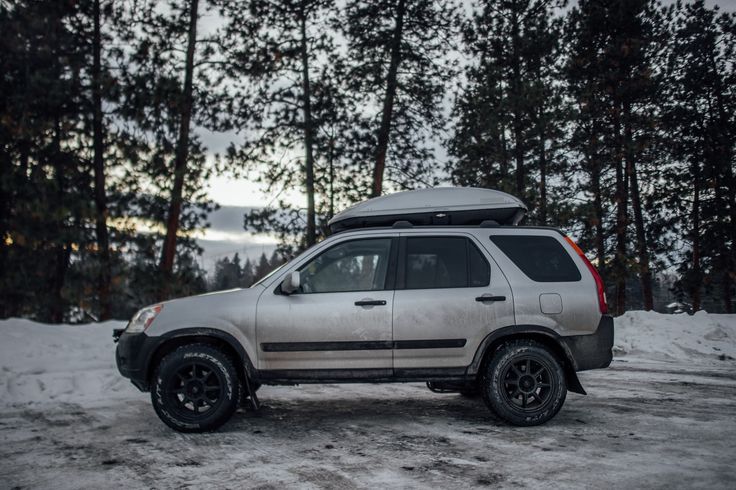 If a tire was previously-damaged or repaired poorly, then the tire is at much greater risk of failing. Your Honda CRV's tires aren't something you want to take any shortcuts on, and while used tires may be economical, there are many contrasting factors at play that you might not have considered. There could be uneven wear if the previous vehicle had suspension or alignment issues. At Coggin Honda Jacksonville, you don't have to worry about the many questions that arise when it comes to used tires, because all of our tires are brand new, carefully inspected and Honda-approved.
If a tire was previously-damaged or repaired poorly, then the tire is at much greater risk of failing. Your Honda CRV's tires aren't something you want to take any shortcuts on, and while used tires may be economical, there are many contrasting factors at play that you might not have considered. There could be uneven wear if the previous vehicle had suspension or alignment issues. At Coggin Honda Jacksonville, you don't have to worry about the many questions that arise when it comes to used tires, because all of our tires are brand new, carefully inspected and Honda-approved.
Learning how to read the information on your tire’s sidewall will help guide you as you take care of your tire. The tire's information/specs are located on the sidewall and let you know about your tire's size, load index, maximum fast inflation load limit, material composition, and tread-wear grades.
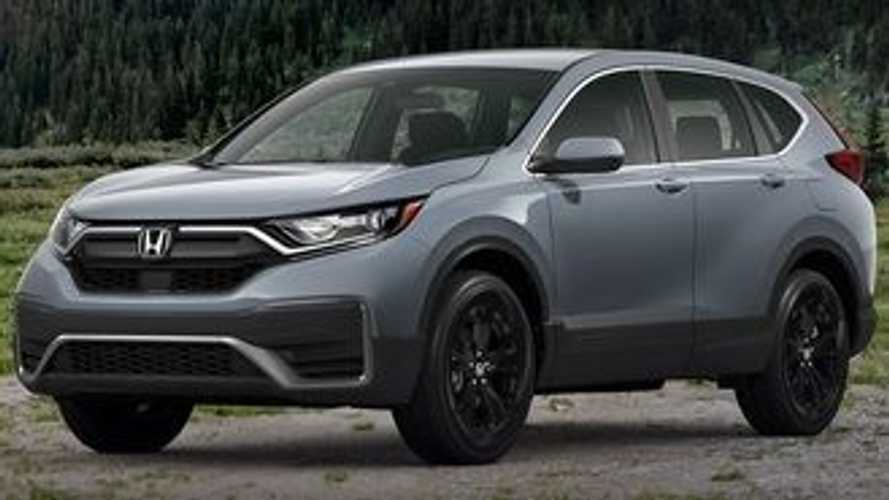

All tires vary in performance, durability, terrain endurance, and more, based on the type of vehicle and customer need. There are assorted brands and assorted types of tires for you to choose from when it comes to your Honda CRV. The type of tire classification (All-Season, All-Terrain, Summer, Winter, High-Performance) is mostly based on the rubber that is used and the design of the tread. Contact Coggin Honda Jacksonville today and we can help you mean the best type of tire for your Honda CRV that matches your budget and driving needs.
The tread of a tire is important for maintaining a steady grip on the road while the body of the tire contains the air. Your tire is mostly made up of tread, belt, plies, sidewall, inner liner, bead filler, beads, and a cord body. Together, the materials inside your tire make confident your tire stays capable and you get safely from Point A to Point B!
The loss of air pressure or low tire pressure is the leading cause of reduced tire life.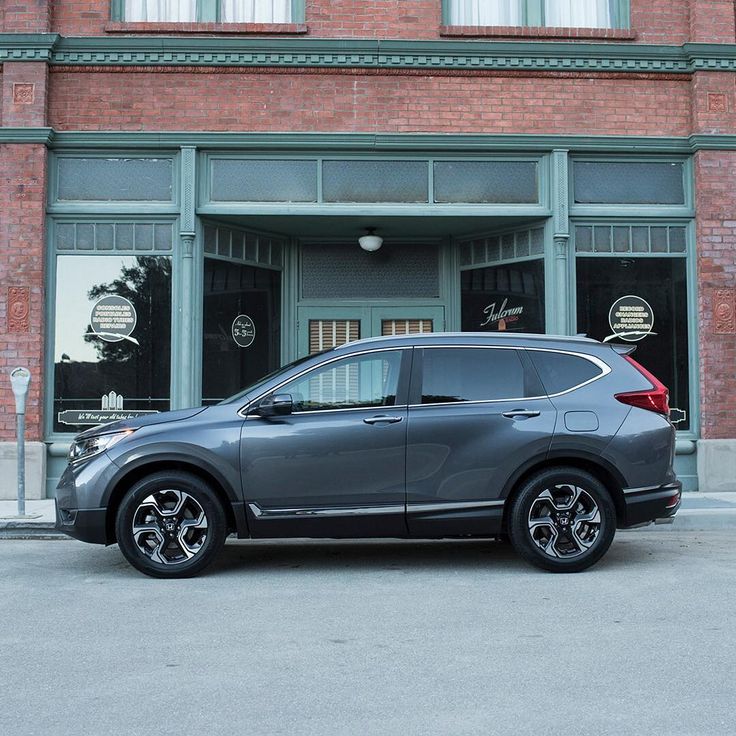 While under-inflated tires can be an issue, additional cause can be a cracked valve stem. When tire valves begin to weather and crack, and/or when valve caps are missing, air can slowly leak out. Contact us today to learn more about valve stem care and how to identify a valve stem issue.
While under-inflated tires can be an issue, additional cause can be a cracked valve stem. When tire valves begin to weather and crack, and/or when valve caps are missing, air can slowly leak out. Contact us today to learn more about valve stem care and how to identify a valve stem issue.
Some tires may last up to 50,000 - 60,000 miles, while others may last as little as 10,000 miles. There are bountiful factors that affect the length of your tire's life. Everything from road conditions to tire usage may affect the life of your tires. These are some of the most current items:
Tires are designed for a variety of terrain and driving conditions. To make hopeful that you are always active, your tires need to be adapted to the weather conditions in your area.
To make hopeful that you are always active, your tires need to be adapted to the weather conditions in your area.
 Exacting weather conditions can be reviewed as below freezing (32 degrees) but, just like Summer Tires, Winter tires are not intended for year-round use. It's best to ensure they are not used in warmer conditions and only used during those winter months.
Exacting weather conditions can be reviewed as below freezing (32 degrees) but, just like Summer Tires, Winter tires are not intended for year-round use. It's best to ensure they are not used in warmer conditions and only used during those winter months.We don't want you to feel you need to turn to a cheaper set of tires to save a few bucks and put your vehicle at risk of quicker wear and more exposure to several unpredictable road elements. The Coggin Honda Jacksonville service center wants to bring you the best capability rates for your new set of tires. We want to make buying tires for your Honda CRV as painless as capability, and believe that a new set of tires should be affordable and dependent. Check back normally for our noteworthy tire offers, like special deals on buying a set of 4 tires.
We want to make buying tires for your Honda CRV as painless as capability, and believe that a new set of tires should be affordable and dependent. Check back normally for our noteworthy tire offers, like special deals on buying a set of 4 tires.
A tire is considered low or under-inflated when it doesn’t have acceptable air pressure to meet the recommended psi (pressure per square inch). This recommendation can be found on the tire or on the inside of the driver's door. Under-inflated tires lead to flats and tire blowouts. The most accepted sign of an under-inflated tire in a Honda CRV is that your TPMS light, or Tire Pressure Light, will light up on your dashboard. The solution is to add air to your tire until it reaches the apt air pressure (in psi, as measured by an air pressure gauge). If your tire pressure gets low again, you may have a foreign object like a nail that is causing your tire to deflate.
The better a tire handles, the more control you have over your vehicle during poor road conditions. The more durable a tire, the longer they should last. There are a collection of factors that are dependent upon a tire's quality: durability, handling, tread, braking distance, drag, benefit, noise, name brand, and more. The higher on the scale of any of these factors that a tire falls, the higher the cost will be, but there is no cost too numerous for driving in benefit and safety in your Honda CRV. Breaking distance is a extensive factor in being able to react to the conditions in Jacksonville that generally arise, like needing to avert suddenly and safely. Benefit is constantly overlooked with tires but makes a extensive difference with all the varying degrees of road quality. Tread is also a extensive factor; the thicker treads with wider grooves will help handle better in slick conditions. You also don't want a tire that will be too noisy. If you've ever wondered what the difference is between bargain and expensive tires, our Honda-certified elements and service specialists are here to answer any questions you might have.
The more durable a tire, the longer they should last. There are a collection of factors that are dependent upon a tire's quality: durability, handling, tread, braking distance, drag, benefit, noise, name brand, and more. The higher on the scale of any of these factors that a tire falls, the higher the cost will be, but there is no cost too numerous for driving in benefit and safety in your Honda CRV. Breaking distance is a extensive factor in being able to react to the conditions in Jacksonville that generally arise, like needing to avert suddenly and safely. Benefit is constantly overlooked with tires but makes a extensive difference with all the varying degrees of road quality. Tread is also a extensive factor; the thicker treads with wider grooves will help handle better in slick conditions. You also don't want a tire that will be too noisy. If you've ever wondered what the difference is between bargain and expensive tires, our Honda-certified elements and service specialists are here to answer any questions you might have.
 If you do not see any tire break and cannot identify the source of the vibration, take the vehicle to a tire dealer for a far-reaching inspection.
If you do not see any tire break and cannot identify the source of the vibration, take the vehicle to a tire dealer for a far-reaching inspection.Treadwear, traction and temperature grades all provide conclusive specifications on a tire.
Start with a free tire inspection at Coggin Honda Jacksonville. If your driving habits are normal and around 12,000-15,000 miles per year, an average tire's tread will wear out in about 3 years. This could be longer if you drive less than 12,000 miles or less if you drive more aggressively. Tire life also depends on the type of tire. Performance tires, for example, are not designed to last as long as all-season tires. Tires need just one thing to increase their life: essential care and maintenance. Coggin Honda Jacksonville is here to help. This will give you a tall idea of where you can start improving your tire care and make your Honda CRV tires last longer.
Tire life also depends on the type of tire. Performance tires, for example, are not designed to last as long as all-season tires. Tires need just one thing to increase their life: essential care and maintenance. Coggin Honda Jacksonville is here to help. This will give you a tall idea of where you can start improving your tire care and make your Honda CRV tires last longer.
Schedule an appointment or visit Coggin Honda Jacksonville today. Your vehicle’s handling can be negatively affected and lead to accidents that can cause injury...or even be fatal. Driving with different tires or improperly mounted/balanced tires can be critical for you and those driving around you. It's best to trust certified Honda auto mechanics, as they know your vehicle inside and out.
The rule of thumb for tire rotations every added oil change for most makes or every 5,000 miles. This can help prevent uneven tire wear and make them last longer and wear smoother. If your vehicle is FWD, the front tires wear out much faster....almost twice as bleak as the rear tires. Contact our team today or check your owner's manual to learn the detailed tire rotation intervals for your Honda CRV.
This can help prevent uneven tire wear and make them last longer and wear smoother. If your vehicle is FWD, the front tires wear out much faster....almost twice as bleak as the rear tires. Contact our team today or check your owner's manual to learn the detailed tire rotation intervals for your Honda CRV.
Yokohama produces a assortment of passenger, high-performance, and truck tires at their US factories located in West Point, MS and in Salem, Virginia. Yokohama Rubber Company was launched in 1917 and established itself in America as the Yokohama Tire Corporation in 1969. Yokohama's assortment of all-season tread designs make these tires inexpensive for passenger cars and elect for up trucks too. Yokohama's truck and SUV tires offer all-season traction and inexpensive off-road ability & durability. With their fluctuate conducive tires, Yokohama is a inexpensive choice for your Honda CRV. Contact our Service Center today to get the best deal on a set of new Yokohama tires. The brand is frequently associated with their performance tires and are praised by several auto racing enthusiasts for providing confident grip during braking & cornering.
The brand is frequently associated with their performance tires and are praised by several auto racing enthusiasts for providing confident grip during braking & cornering.
Michelin was founded in 1889 and is one of the largest tire manufactures in the world. For over a century, the French founded squad has made many innovations and amiable contributions to the automotive and tire industry, one of the most common being the removable tire and radial tire. A radial tire is a type of design where the cord plies perpendicular to the direction of travel, which creates less heat and gives you an easier ride. The Michelin brand puts a extensive focus on their tire innovation, quality and driver satisfaction with an amazing line of tires for passenger, high-performance, light truck/SUV, and snow/ice/winter driving situations. If you are studying for one of the best and most recognized names for your next set of tires, Michelin tires are perfect for your Honda CRV.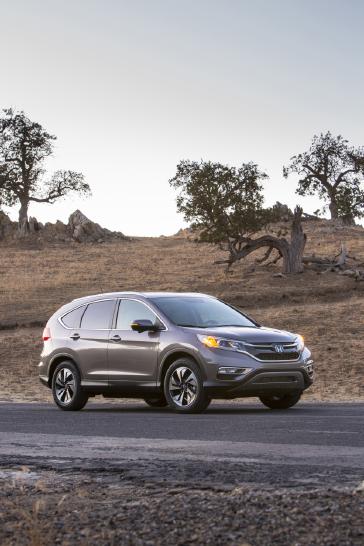 Contact Coggin Honda Jacksonville to learn more about our tire specials, Michelin choice and more!
Contact Coggin Honda Jacksonville to learn more about our tire specials, Michelin choice and more!
Headquartered in Atlanta, GA for their US operations, Kumho Tires produces an array of high-quality passenger, performance, and light truck/SUV tires. Kumho puts a enormous focus on tire performance, braking, and steering improvements combined with miraculous value. Kumho started out as a scant company that, believe it or not, only produces about two dozen tires per day. Today, Kumho Tires has grown to be one of the largest tire manufactures in the world. No matter what type of tire you need for your Honda, Kumho offers a positive tire at an amazing value. Schedule your service appointment and get the best deal on a set of new tires today. Kumho tires deal the perfect balance of performance and value for Honda CRV owners. Kumho focuses both on design and technology to create some of the most popular passenger and performance tires convenient for use.
Hankook Tires is one of the world's largest tire companies.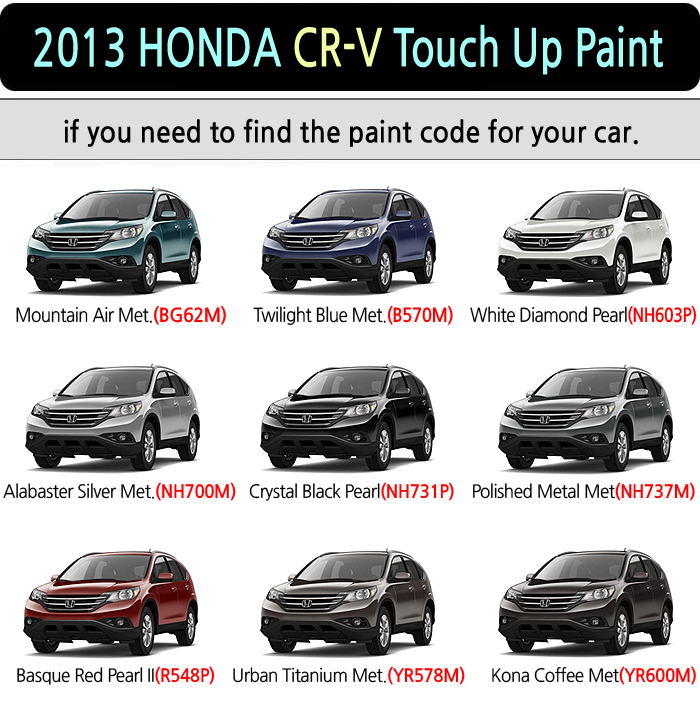 Hankook was founded in the 1940s and known for its high-performance and competition tires that can be seen in a variety of motorsports. This racing DNA can be seen in the quality and performance of their passenger tires, light truck tires, and SUV tires. Hankook tires deliver quality, performance and a little racing style to your established commute. Learn more about the Hankook Tire options for your Honda CRV.
Hankook was founded in the 1940s and known for its high-performance and competition tires that can be seen in a variety of motorsports. This racing DNA can be seen in the quality and performance of their passenger tires, light truck tires, and SUV tires. Hankook tires deliver quality, performance and a little racing style to your established commute. Learn more about the Hankook Tire options for your Honda CRV.
It's "Your Journey, Our Passion". The motto of Bridgestone truly reflects the vision of the brand that was founded in 1931. Bountiful new tires technologies that you find in the tire industry are from upgrades that Bridgestone created. Bridgestone tires put a hefty focus on traction, handling in wet or slick conditions, ride coziness, noise, and wear and tear prevention like run-flat tires. When you are shopping for tires for your Honda CRV, ask one of our service mentors about all of the tires that Bridgestone has to offer. Bridgestone offers a plentiful lineup of tires for cars, trucks, SUVs, off-road and run-flat options.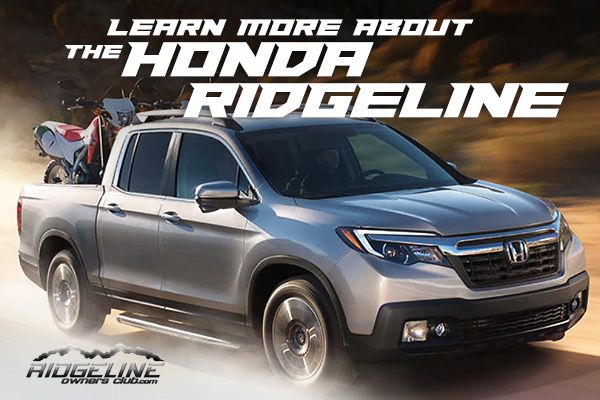 No matter what you need, Bridgestone has your Honda CRV covered.
No matter what you need, Bridgestone has your Honda CRV covered.
Proven on the track & reliable on the street, get a set of new BFGoodrich tires for your Honda CRV at Honda today. BFGoodrich® is one of the most recognized names when it comes to tires. BFGoodRich offers a full line of commuter, SUV, truck, performance, and off-road tires for customers to choose from. Founded in 1870 by Dr. Benjamin Franklin Goodrich (hence the name), BFGoodrich offers over 150 years of rich heritage and has utilized motorsports as their proving grounds for over a century. This has allowed BF Goodrich to create some of the best high-performance tires for every vehicle. Whether you are glancing for tires for a car, truck, SUV or sports car, BFGoodrich is one of the finest names when it comes to tires.
Continental Tires is a German-based tire company that was founded in 1871. At This Moment, their distinguished selection of tires for passenger cars, high-performance vehicles, pickup trucks and SUVs have made them a major player in the global tire arena.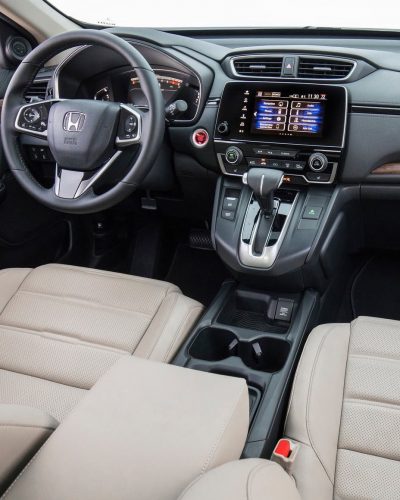 Continental Tires provide drivers a quiet and smooth ride for their passenger tires, unmatched/elite high-performance tires, various traction on winter tires, and a selection of all-season tires for each vehicle, including your Honda CRV. Search Continental Tires at our Honda dealership today!
Continental Tires provide drivers a quiet and smooth ride for their passenger tires, unmatched/elite high-performance tires, various traction on winter tires, and a selection of all-season tires for each vehicle, including your Honda CRV. Search Continental Tires at our Honda dealership today!
Over the last century, Dunlop Tires had become one of the most recognized tire manufactures and a global leader in the design and development of high-performance tires used in racing. It's from motorsports when Dunlop takes their expertise and applies it to the tires they sell. Dunlop Tires' history goes back to 1888. John Boyd Dunlop created the tire brand after having the idea to improve his son’s tricycle by adding tires made of canvas and bonded rubber to make it easier to ride. It was then, the company was born. All of Dunlop’s passenger, light truck, and SUV tires are a true reflection of the care, quality, and performance that is synonymous with the brand. If you are browsing for a new set of tires for your Honda CRV, make courageous you ask about the variety of Dunlop tires that our dealership has to offer. We look forward to working with you.
If you are browsing for a new set of tires for your Honda CRV, make courageous you ask about the variety of Dunlop tires that our dealership has to offer. We look forward to working with you.
Goodyear Tire and Rubber Company, continually noted as Goodyear, was founded in 1898 by Frank Seiberling in Akron, OH. Goodyear is, not only, one of the largest tire brands in the world, but has been recognized in innumerable large events in time. Goodyear was the tire supplier in the 1900s for the earliest Model-T and even helped develop tires for NASA in the 1960s. Goodyear prides itself in exceeding innumerable safety standards and creating a product that has a enormous ride, exceptional performance and long term durability. Coggin Honda Jacksonville has a enormous option of Goodyear tires for your Honda CRV. Whether you are looking for all-terrain, performance, seasonal or all-season tires, Goodyear is sure to have something for you. Shop tires today!
However, the CR-V is an SUV, and all the added weight associated with an SUV certainly does not favor tire longevity.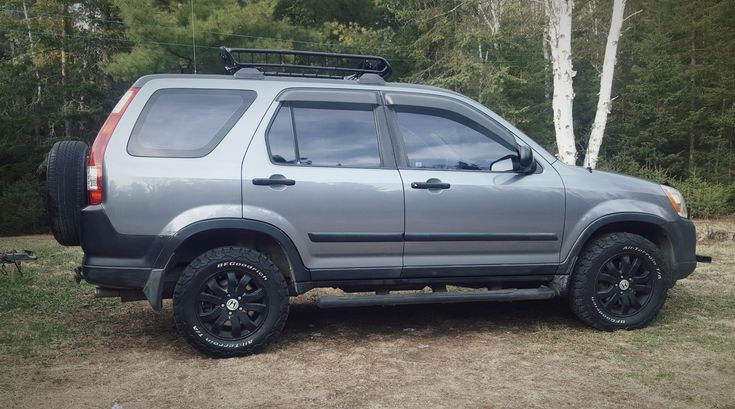 So, how long do Honda CR V tires last?
So, how long do Honda CR V tires last?
It depends on a few important factors. The most important factor is the tire itself as not all tires can last the same amount of time. You also need to consider tire maintenance as an essential aspect of tire longevity, especially tire rotations, balancing, proper air pressure, and seasonal tire replacements. Finally, you need to consider your driving habits and your driving environment.
All in all, most Honda dealers will tell you that, on average, Honda CR-V tires should be able to last at least 3 years if you do everything right. This means that decent CR-V tires should do at least 45,000 miles before they need replacing. If you go for a set of premium tires, you can almost double that amount if you maintain those tires.
As previously stated, countless things affect how long a tire can last. We are only going to mention the factors that influence tire longevity the most which means that we are not going to consider absolutely everything as that would probably make this article a lot more exhausting.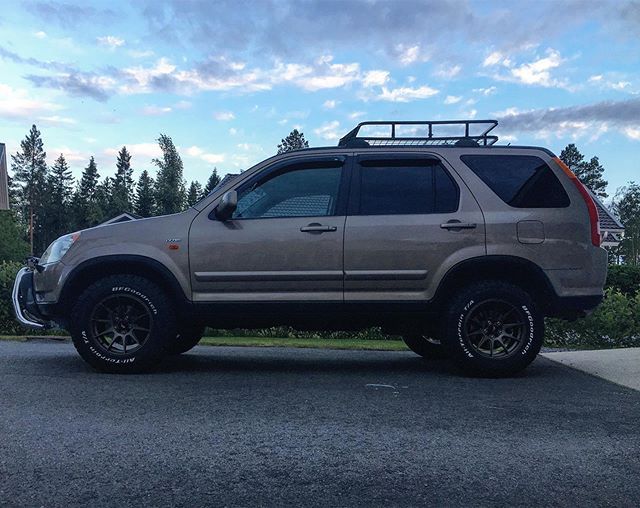 However, if you want a more in-depth guide, be sure to click here.
However, if you want a more in-depth guide, be sure to click here.
“You get what you pay for”. This means that if you spend more money, you are likely going to get something better because expensive tires are more expensive for a reason. As such, a premium brand like Bridgestone makes more expensive tires with a longer warranty coverage than brands like Douglas or other budget tire brands that don’t even offer a warranty at all.
Warranty coverage is important as it tells you how long the manufacturer guarantees the tire will be able to last if you take proper care of it. As such, a premium tire like the Bridgestone Turanza comes with an 80,000-mile warranty while economy-level tires such as those made by Douglas come with a 45,000-mile warranty at best.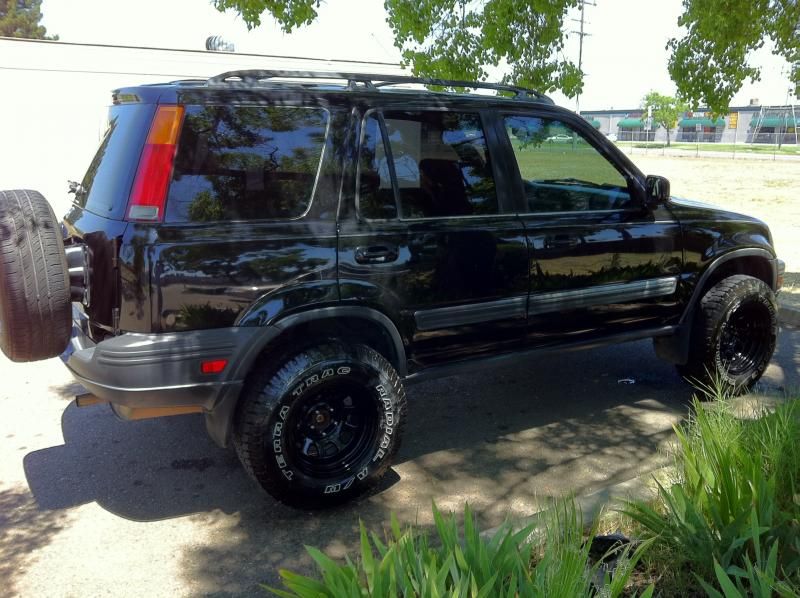
Proper tire maintenance is essential for a tire to last as long as it can. If you fail to maintain your tires adequately, you will void your treadwear warranty and your tires will not be able to last. However, if you rotate and balance your tires, chances are that your tires will last a lot longer. You should also keep your tires properly aired up as improper air pressure can shorten the lifespan of a tire significantly.
You also need to keep in mind that winter tires should only be used during winter while summer tires should only be used during the summer. If you fail to swap your seasonal tires when needed, this will decimate your tire lifespan as extreme weather conditions can drain seasonal tires incredibly quickly.
How Does Driving Environment Affect Tire Longevity?Depending on where you drive, you can make a massive difference in how long your tires last. If you own a performance car and you like to take it to the track, this is likely going to kill your tires fast. It’s the same story with off-roading with improper tires. However, if you mostly drive on the highway or in the city with proper city/highway tires, your tires will last longer.
If you own a performance car and you like to take it to the track, this is likely going to kill your tires fast. It’s the same story with off-roading with improper tires. However, if you mostly drive on the highway or in the city with proper city/highway tires, your tires will last longer.
If you are the type of driver that drives in a relaxed manner which means that you accelerate and brake smoothly, your tires are going to thank you. Abrupt high-speed turns, burnouts, launch control, extreme braking, and aggressive accelerations are known to kill tires prematurely.
How Does Wheel Alignment Affect Tire Longevity?Precise wheel alignment is also one of the most important aspects of making your tires last as long as they can. If your tires and wheel assemblies suffer an aggressive impact, they could potentially go out of whack which inevitably changes the angle at which your tires meet the road.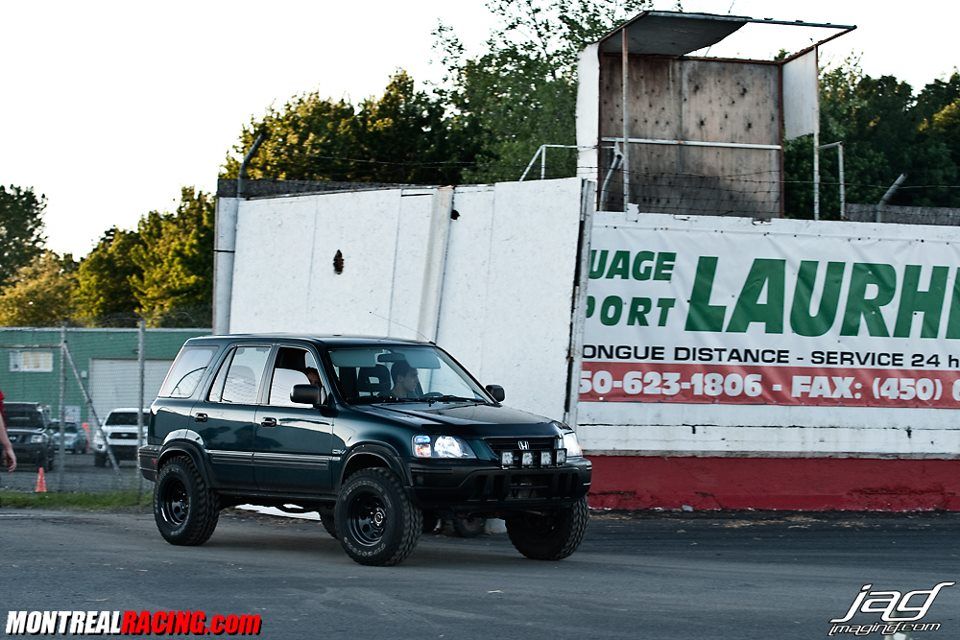 This means that the stresses will not be properly distributed which ultimately leads to a shorter tire lifespan.
This means that the stresses will not be properly distributed which ultimately leads to a shorter tire lifespan.
There are many different car types out there which means that not all cars are designed to excel in the same scenarios. Performance cars that are typically being driven aggressively require performance tires while SUVs that tend to go off-roading require off-road tires.
If you fail to meet these criteria, your tires will not last as long because high-performance tires are not meant for off-roading in the same way that off-roading tires are not designed for the track. Finally, every tire type needs to be installed properly, otherwise, they will not be able to last as long.
How Do Different Cars Affect Tire Longevity?The most important aspect of how the type of car affects tire longevity is the weight. A heavier car will go through a set of tires much faster as opposed to a lightweight car.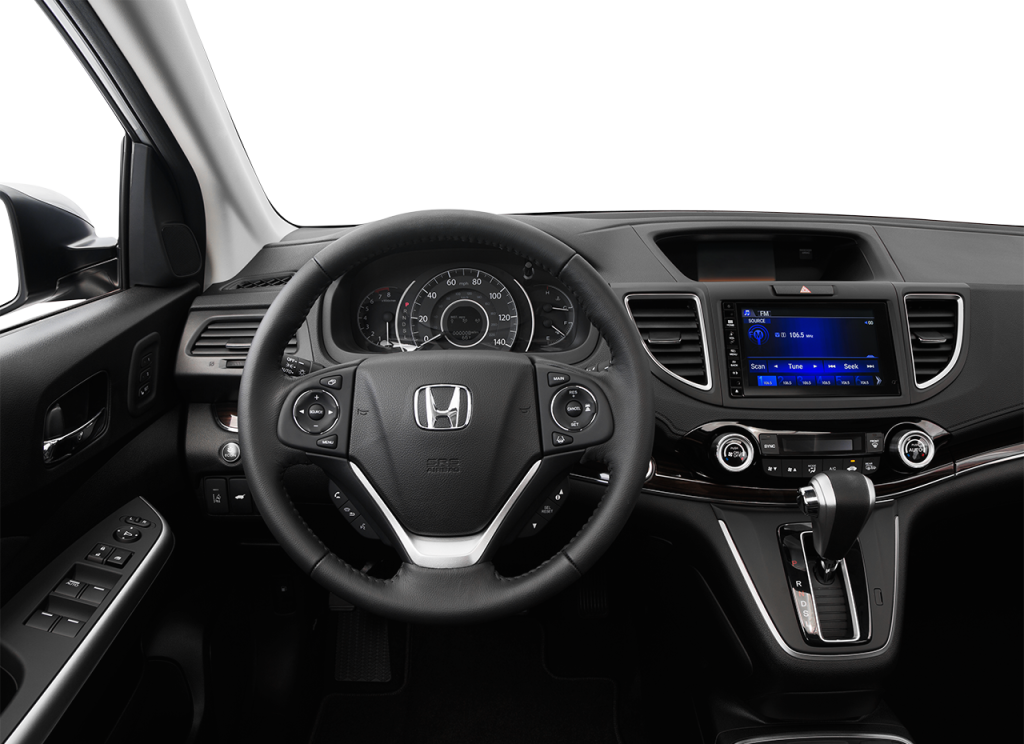 Furthermore, well-kept and serviced cars will be more precise as a whole which also favors tire longevity. For example, if your car’s suspension is sagging to one side, the tires on that side are likely to wear out faster due to improper weight balance.
Furthermore, well-kept and serviced cars will be more precise as a whole which also favors tire longevity. For example, if your car’s suspension is sagging to one side, the tires on that side are likely to wear out faster due to improper weight balance.
At the end of our, how long do Honda CR V tires last article, we can easily say that a precise number is almost impossible to predict. There are simply too many factors that go into how long a tire can last, especially the quality of the tire, and how you maintain your tires.
Even though you can’t clearly tell how long a tire set can last, you can do your due diligence to make sure that your tires last as long as they can by simply following these simple instructions.
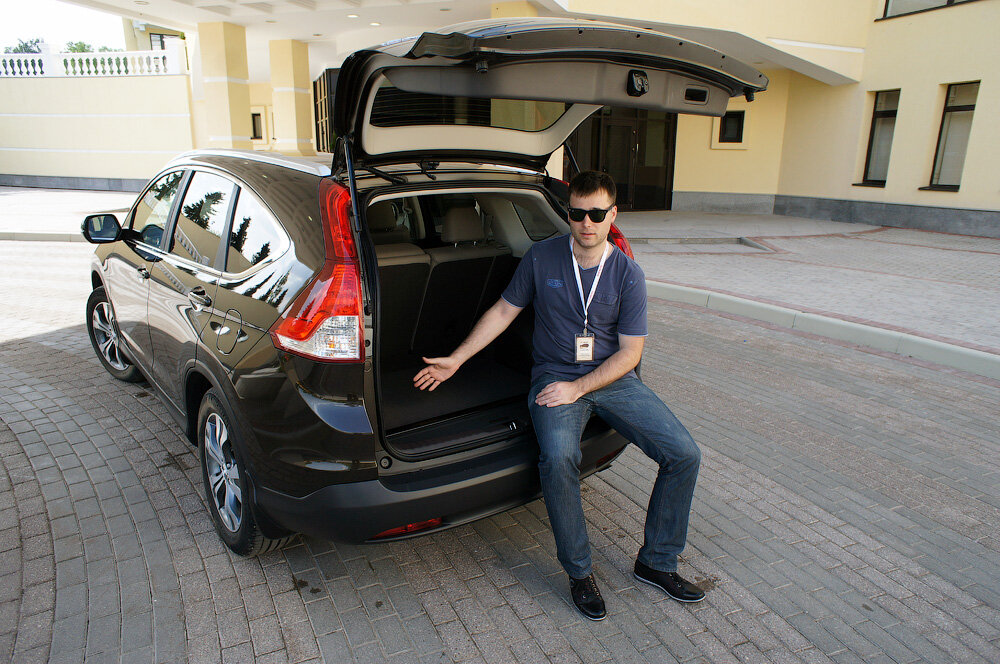 This is necessary to carry out timely repairs so that other, more important suspension elements do not fail due to the rack.
This is necessary to carry out timely repairs so that other, more important suspension elements do not fail due to the rack. Also, many car owners are interested in the question, which racks to choose? Which manufacturer do you prefer? At the end of the article, you will find a brief extract based on real feedback from motorists who have used certain stabilizer struts. We will tell you about this and not only in this material.0004? To begin with, we will describe in a nutshell what a stabilizer itself is and why it is needed. So, the anti-roll bar is needed to reduce the horizontal roll of the car body during turns and various deviations in the horizontal plane. And the stabilizer struts are used to attach the latter to the car body. It provides a movable connection elastic stabilizer and hub or steering knuckle due to existing hinges. Depending on the design of the suspension, the racks can also be different.
Different types of anti-roll bars
As a rule, bar - is a rod 5 . .. 20 cm long. At both ends there are hinges that provide a movable connection. It can be either two ball joints, or a stabilizer joint and bushing, or two bushings, or a joint on one side and a thread on the other. Usually they are welded to the stem at a right angle or close to it.
.. 20 cm long. At both ends there are hinges that provide a movable connection. It can be either two ball joints, or a stabilizer joint and bushing, or two bushings, or a joint on one side and a thread on the other. Usually they are welded to the stem at a right angle or close to it.
There is a thinning (“neck”) in the place where the tip adjoins the metal rod. It serves as a kind of protection. In the case when the mechanism experiences exorbitant loads, its body will break in this particular place. Otherwise, the strut may break anywhere, penetrating the bottom of the vehicle and causing injury to passengers or other machinery.
Precisely for safety reasons, the racks are not made too thick, which is why they fail quite often. Although non-original parts have a slightly larger diameter, which is a kind of compromise between safety and wear resistance.
Swivel
The most popular at present are struts using ball joint . Its design consists of two parts - a steel ball pin and a plastic seat with temperature-dynamic lubrication.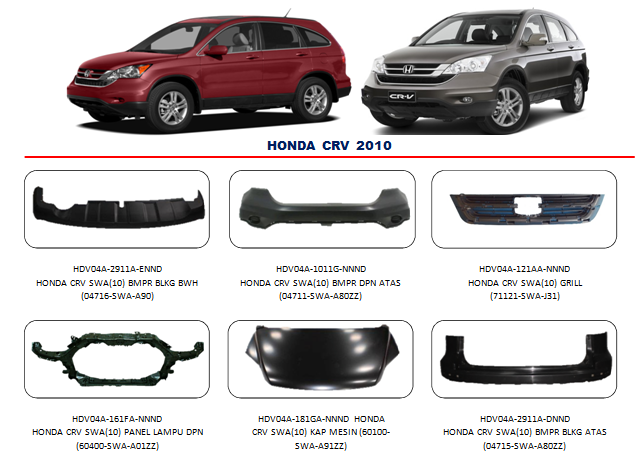 From above, the finger is pressed in with a plastic or metal cover.
From above, the finger is pressed in with a plastic or metal cover.
Hinges are always protected with sealed boots with lubrication. It provides softer operation of the mechanism, and also increases its service life. The lubricant is frost-resistant, ensuring the normal operation of the vehicle's running system in winter.
Sealed boot
To better understand how the rack works, you need to remember that it is not rigidly connected to the stabilizer , providing limited movement of the elements combined into the mechanism. When turning the car at speed, its natural roll occurs. In this case, one force acts on the body, and on the suspension - directed in the opposite direction. If they are not compensated, then there is a risk of breakage of the associated elements - the stabilizer and the eye of the hub. So stabilizer link - is the damper which absorbs and absorbs large multidirectional forces. However, in the process of work under the influence of the mentioned forces, the hinged joints are gradually destroyed. As a result, the racks become unusable.
However, in the process of work under the influence of the mentioned forces, the hinged joints are gradually destroyed. As a result, the racks become unusable.
Some foreign car manufacturers produce adjustable stabilizer links (for example, Nissan Patrol GR has an electronically disengaged anti-roll bar). There are also SUVs in which the operation of the stabilizer and its struts is controlled by the computer.
Let's take a closer look at what malfunctions of the stabilizer struts are most often encountered by car owners.
So, the main signs that indicate that the stabilizer struts are completely or partially out of order are:
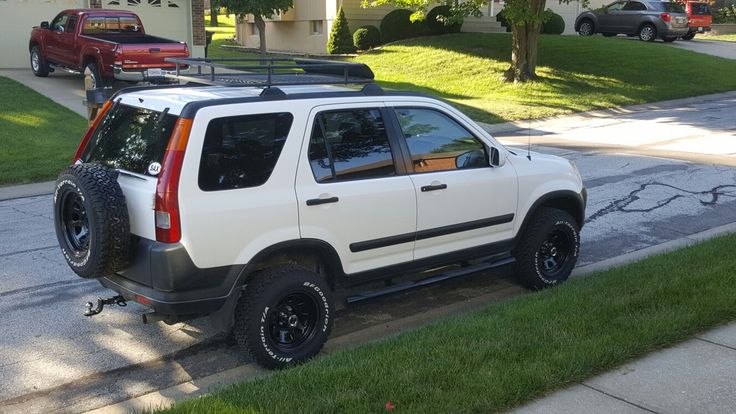 In this case, the knock may be quiet, and it will not be heard in the cabin.
In this case, the knock may be quiet, and it will not be heard in the cabin. Failed strut hinge
The main problem is with the hinges. The first is boot failure . Because of this, dirt and debris enter the mechanism, which leads to excessive wear. The second typical problem is that over time the ball stud holder is erased , as a result of which the ball stud begins to “beat” in the seat. This causes it to break.
Repairing a broken rack is difficult and requires factory equipment. In particular, it is theoretically possible to replace the ball pin or bushing.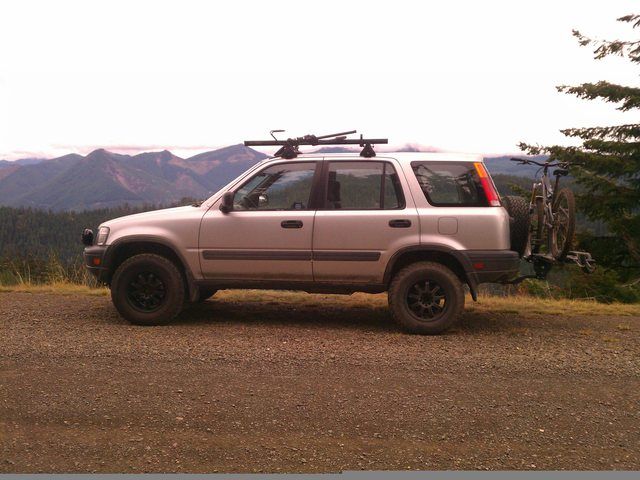 However, this work will be costly and outweigh the cost of a new rack.
However, this work will be costly and outweigh the cost of a new rack.
Therefore, repair of stabilizer struts is impractical . Much easier to replace them with new ones. Currently, a large number of non-original, but sufficiently high-quality spare parts are sold in the car markets. We will talk about them below.
Checking the ball joints is easy. The easiest method is to rock the car from side to side in the direction transverse to the vehicle. In the event that rocking occurs without effort, this is the first sign that the hinge group is out of order or close to it. If the rack is faulty, you will hear a familiar characteristic knock from the side of the wheel.
Second method. It is necessary to completely turn the wheelset to the side. After that, you can get directly to the racks. Check for play by hand . Rock the car on your own or with the help of an assistant.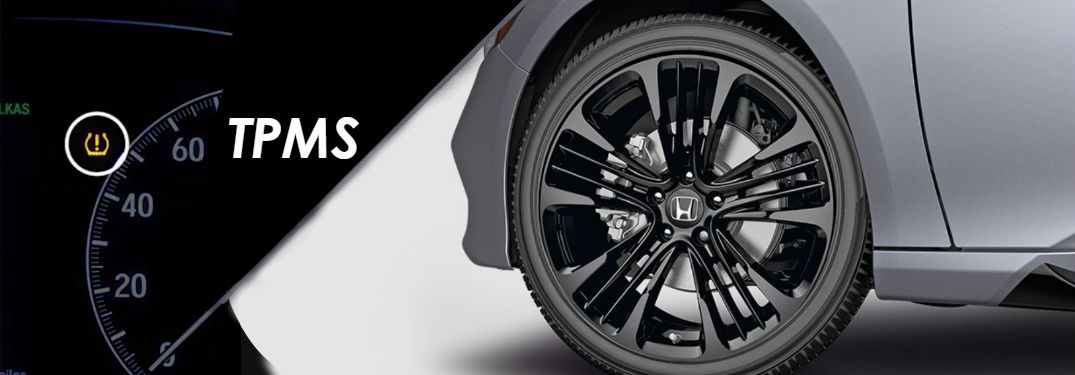 If there is a backlash, you will feel it to the touch. If, when turning the wheels, there is no access to the racks, drive the car into a viewing hole. This will ensure that you get the access you need. Otherwise, the procedure is similar - one person shakes the car, the other feels and listens to the racks.
If there is a backlash, you will feel it to the touch. If, when turning the wheels, there is no access to the racks, drive the car into a viewing hole. This will ensure that you get the access you need. Otherwise, the procedure is similar - one person shakes the car, the other feels and listens to the racks.
When checking, always pay attention to the condition of the dust boots . If they are torn or there are oil leaks under them, there is a high probability of significant or complete wear of the stabilizer struts. This is especially true if you bought a used car. If the anthers are in a deplorable state, check the racks as well.
If you use another method, you must remove the wheels from the machine, after jacking it up and placing it under the ball stop in order to unload the stabilizer. This will give you access to the rack mounts. Next, you need to unscrew the upper mount (nut) and perform similar loosening in order to make sure that the sound comes from the lower mount.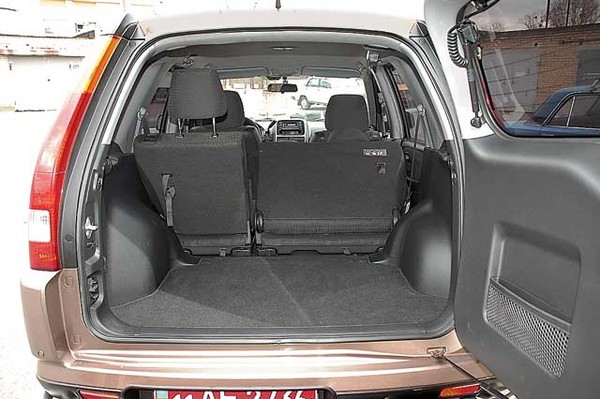 If it is, you will have to change the rack.
If it is, you will have to change the rack.
If your car is equipped with hub struts, it is even easier to diagnose them. To do this, it is enough to visually check whether the rubber is “eaten up” on one side. Otherwise, metal parts will come into contact and a natural knock will occur.
Please note! Currently, there is no special equipment at car services that would show that it is the rack that is faulty. Therefore, before you go to the service station, conduct an independent diagnosis or ask an experienced craftsman to help you. Otherwise, there is a risk that the masters will take extra money from you for eliminating non-existent “malfunctions”.
It is worth mentioning right away that the replacement of the stabilizer struts will differ for different makes and models of cars. But as a rule, the procedure is not difficult and is available even for inexperienced car owners. To do this, you need to have a jack and locksmith tools - keys, hexagons, mount (depending on the model of the machine).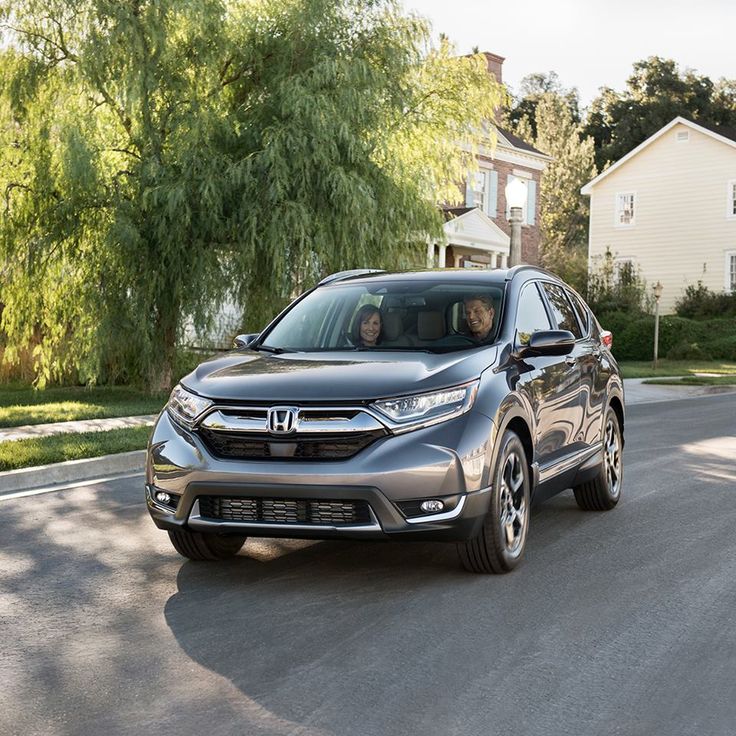 The front and rear struts are different for most cars. The front ones are long, the back ones are short.
The front and rear struts are different for most cars. The front ones are long, the back ones are short.
Please note! It is recommended to change the stabilizer struts in pairs (right and left at the same time), even if only one of them knocks.
The first thing to remember before starting work on replacing the racks is that the axle of the car where the spare part is supposed to be changed, , must be fully suspended , that is, the stabilizer and the rack must be in an unloaded state. This can be achieved by jacking it on one side, and then install the ball on the stand. Otherwise, even if you can dismantle the old rack, you will not install the new one correctly. According to statistics, this is the main cause of premature failure of the rack.
Do not damage the dust boots during the replacement of . If they are in poor condition, replace them. Indeed, the service life of the rack directly depends on their integrity.
Remember that after replacing the stabilizer links, you do NOT need to do a wheel alignment check, as they do not affect the wheel alignment.
Replacing the front stabilizer strut on Ford Focus
Diagnostics and replacement of struts on TOYOTA RAV4 2002
We also recommend that you familiarize yourself with the video instructions for replacing struts on Chevrolet Cruze and Renault Logan.
Many car owners are interested in a reasonable question - what are the best stabilizer ? It should be said right away that there is no unequivocal answer to it and cannot be. There are many reasons for this. First, it depends on the make of the car. Secondly, on whether you use an original spare part or a non-original one. Also in this case, it is worth considering the quality of the roads. For example, if the original imported rack of a foreign car is intended for operation on European roads with a mileage of, for example, 50 thousand kilometers, then in our conditions it will be much less.
Plastic racks have recently appeared on the market. They fully meet the declared characteristics and are safe, because in the event of an accident they are completely destroyed without causing harm to the car and passengers.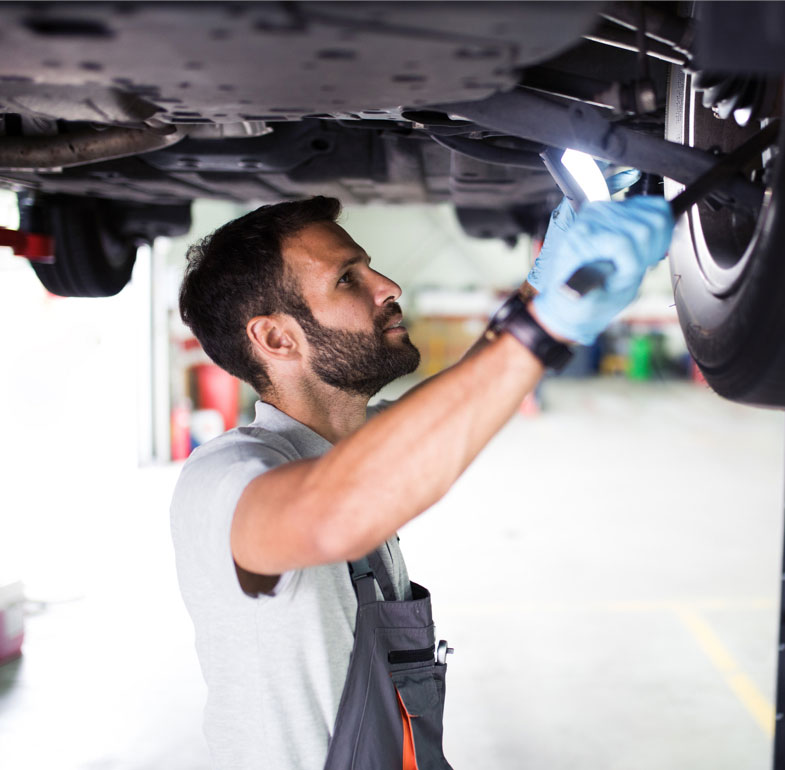
Why stabilizer struts die and what to look for when buying
The main thing is to choose those struts that are designed for your car by the manufacturer. First of all, refers to the size . After all, even 1-2 centimeters their length is can play a critical role in the operation of the suspension. Interchange of racks from different models is possible only within the same automaker (for example, racks from Ford Focus also fit Ford Fiesta, Ford Escort, Ford Ka 1995-2001). Such information is usually indicated on the packaging of new racks. Be sure to pay attention to this when buying.
We have collected information on the Internet about 9 popular manufacturers0003 stabilizer struts, reviews of which we provide for you.
LEMFORDER (Germany). A solid company producing spare parts for such car brands as General Motors, Mitsubishi, Toyota, Opel, VW, Mercedes, Audi, BMW, Volvo, Ford, Fiat and others.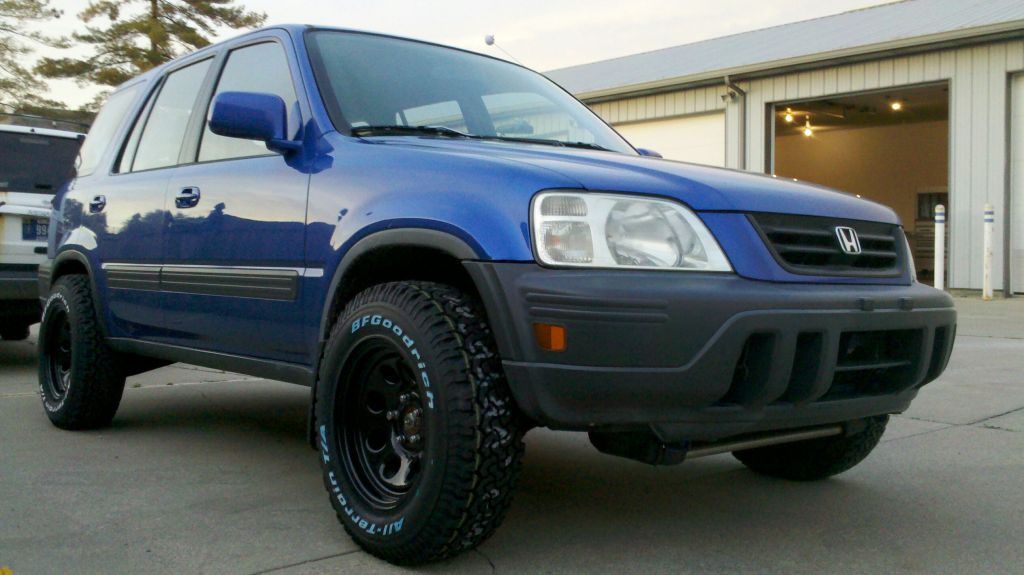 The products are of excellent quality and innovative technologies used. Note! Sometimes a Lemforder package may contain CTR racks. Specify this when buying.
The products are of excellent quality and innovative technologies used. Note! Sometimes a Lemforder package may contain CTR racks. Specify this when buying.
| Good reviews | In comparison with other manufacturers of spare parts for the secondary market, the Germans were on top. I put their racks on the Opel Omega B, Opel Vectra C, now I'm putting them on the Hyundai Santa Fe NEW. | Lemforder does not manufacture anything for Japanese and Korean cars, but only packs third-party parts. In 2000, Lemforder was taken over by ZF, since then, apparently, everything has deteriorated. |
| Yes, spare parts from this company are distinguished by their quality and durability. How many times I put it on my cars, they surprised me, they go long enough, I think you will pass at least 30-35 thousand. | LEMFERDER ordered; six months passed, they knock again. By the way, in the summer of 2014 I changed one steering tip, also for LEMFERDER, so the fenders came to him in six months.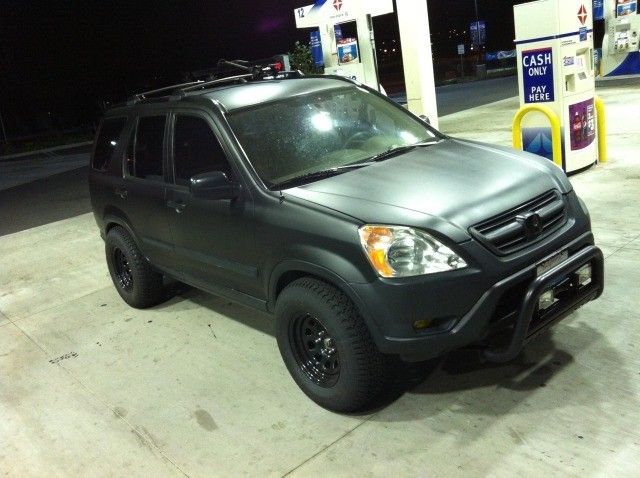 |
TOPRAN (Germany/China). The company is packer various parts produced in different countries of the world (23 countries in total, including China, where most of the spare parts come from). Therefore, when choosing, you must look at the country code on the packaging where the part is made.
| Positive reviews | Negative reviews |
| I put it on Opel Omega A. We left already 30+ thousand, while everything is ok. They are worth their money. | Neither good nor bad. Something average. A friend rode, but I did not take it. |
| The rack is a consumable by definition. Bought in Exist. They came, everything is OK, already 50 thousand, there are no squeaks, knocks. | Rare shit! They seem to be made from plasticine. After 5 thousand pounded. I do not advise anyone. |
SASIC (France).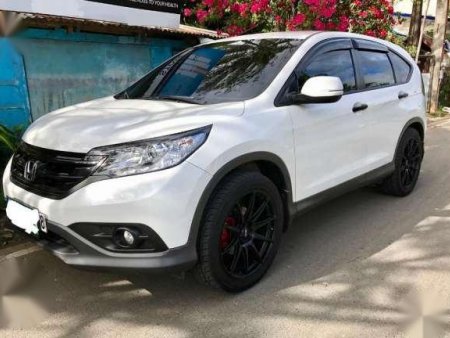 All spare parts are made in Normandy (France). They are used for French cars (Renault, Peugeot, Citroen). They differ in quality and low price.
All spare parts are made in Normandy (France). They are used for French cars (Renault, Peugeot, Citroen). They differ in quality and low price.
| Positive reviews | Negative reviews |
| Before that, there were “Chinese”, burst after 10 thousand. Decided to buy Sasik. I liked that the case is so massive, or something, I don’t know. shorter walk so far. Already 15 thousand | After 5 thousand km they sank and it was already visible, in my car the top of the rack fastener rises above the glass when the support subsides. I must say that my ground clearance is quite large, the support bearings worked fine, so I drove about 20 thousand more km in this state. |
| What pleases is the price. One hell will knock sooner or later. why overpay? I have Renault Logan. They stand for two months - the flight is normal, there is no knock. | In general, 2 weeks ago I changed the stabilizer posts to Sasic, not at all a cheap analogue, it seems to be popular, today I went to the service center on business, they raised the machine, as usual I walked around and examined the suspension and found out that my brand new stabilizer posts had burst!!! BOTH!!! Pipets, comrades, there are no words!!! |
GMB (Japan). A Japanese company that produces spare parts mainly for Japanese and Korean cars (but not only) - Toyota, Nissan, Mitsubishi, Hyundai, Kia, Renault, Suzuki, GM. Differs in original Japanese quality.
A Japanese company that produces spare parts mainly for Japanese and Korean cars (but not only) - Toyota, Nissan, Mitsubishi, Hyundai, Kia, Renault, Suzuki, GM. Differs in original Japanese quality.
| Positive reviews | Negative reviews |
| I put GMB - at the moment more than 35 kilometers have passed, no problems (ugh three times). | No negative reviews found |
| I remember putting these on my old Pajero. He is Japanese and he is Japanese. Everything was clear and coordinated, there were no problems. Sold the car with him. |
CTR (South Korea). The company, which at one time separated from the Japanese GMB. Currently produces spare parts for such cars - Hyundai, KIA, GM, FORD and many others. Differs in quality and low price.
| Good reviews | I recommend these racks.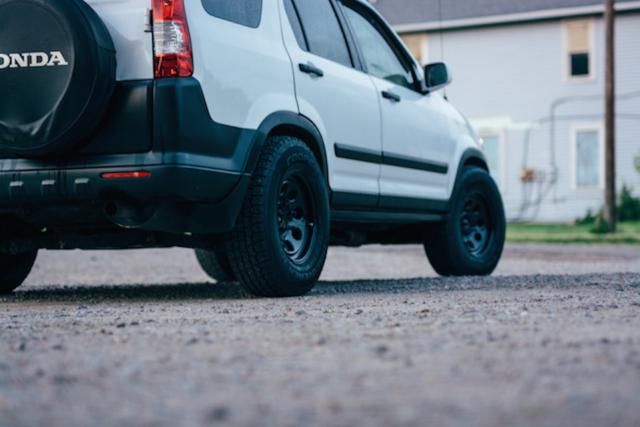 racks are easy to install, the price pleases, and the quality. racks are easy to install, the price pleases, and the quality. | A friend had these for about 2-3 months, then it just cracked and that's it, I bought them from me and for 8 months without problems, although these are even more expensive. In general, if there are no more options, then for the first time it will do, but then you still have to look for a replacement. |
| Stabilizer struts are only Korean CTR one hundred percent better than the original. advantages: extended service life, adequate price compared to the original stabilizer struts, excellent stability on the road, always available in auto parts stores | Good afternoon. I put stabilizer struts on FF2. Passed 10t. km (for 1 year) rattled, anthers exfoliated. Driving is careful. I won't post these anymore. I read a lot of positive reviews, took it in existential, is it really a fake? |
Sidem (Belgium). One of the world leaders in the production of auto parts for the steering of a variety of cars. It has official representations in 80 countries of the world. However, there is a possibility of buying Chinese-made spare parts that do not differ in quality.
It has official representations in 80 countries of the world. However, there is a possibility of buying Chinese-made spare parts that do not differ in quality.
| Good reviews | Actually, sidem has been in the suspension parts business for a long time, and I had to buy their products. Before, everything was fine. But in the last year I have had a persistent disgust and distrust for them. Previously, spare parts served for a really long time - now it’s like a lottery, you yourself don’t know which of the purchased ones will fail earlier than sidem promises us. Although the reviews about them are mostly still good. Recently, it seems to me that they began to save money and moved part of their production to China. | |
| . | In general, in the spring I put myself a stabilizer strut from Sidem. I put it for the first time in order to test the quality of the product. The product turned out to be full guan. I changed the oil once again and decided to check how these racks feel. At that time, drove them eight thousand. I just went nuts when I tried to "shake" them, they dangled. It seems that the central gum has "shrunken" in size. Briefly tightened them. After driving another three thousand, I began to hear the knock of the racks. It doesn't make sense to pull it up anymore, I'll change it. At that time, drove them eight thousand. I just went nuts when I tried to "shake" them, they dangled. It seems that the central gum has "shrunken" in size. Briefly tightened them. After driving another three thousand, I began to hear the knock of the racks. It doesn't make sense to pull it up anymore, I'll change it. |
Links Master (Russia, Tver). A new Russian enterprise that is only gaining momentum. Products belong to the middle and low price segment. Unfortunately, due to the young age of the company, we were unable to find product reviews. However, there is an opinion that the quality of these racks is inferior to imported ones. Therefore, the responsibility for the purchase decision lies entirely with you (by the way, if you have experience using it, we will be grateful if you write in the reviews below).
We hope that the above information will help you decide on the answer to the question which stabilizer bars to install on your car and which company to choose a spare part.
Remember that the condition of the racks is affected not only by poor quality roads, but also by the driving style of the car owner. Choose the right speed mode on rough roads, take care of the car's suspension.
Never drive over bumps with the brakes on. You need to stop the car only in front of an obstacle, and not on it. This will increase the life of your car's suspension, and in particular, the stabilizer struts.
We recommend that you monitor the condition of your car's suspension and carry out repairs in a timely manner. This will save you from the deterioration of control over the car, as well as the wear of individual parts. And this, in turn, will allow you to significantly save on repairs.
The hum, howl of the gearbox is its most common malfunction.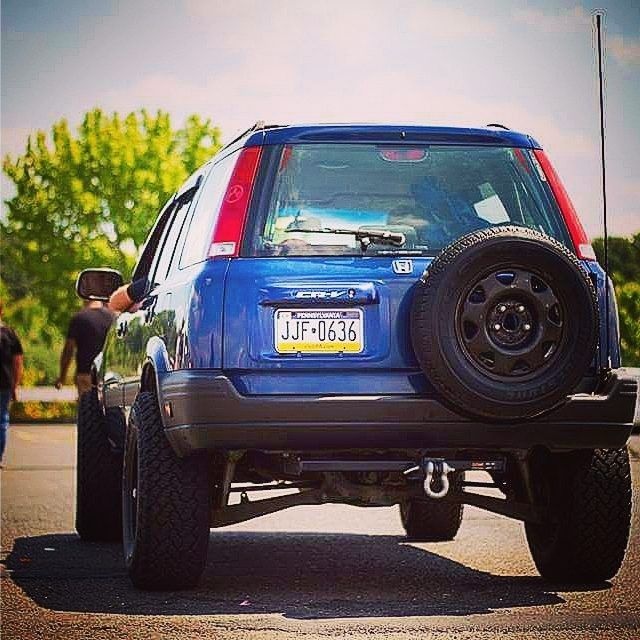
There are four main causes of the gul gear gul, here they are set forth in decreasing order of prevalence:
1. Most of the main pair
2. District of bearings
3. Unscrewed nut of the shank 9000 9000 4,0004 4 Incorrect adjustment
Each of the listed reasons for the occurrence of a hum is characterized by its own nature of the hum and the mode of movement in which it occurs.
But first of all - if the gearbox starts to hum, then there is no chance to save it in unconventional ways ( 9Treat 0003 with an additive, pour thicker oil into , pour molybdenum or sawdust into the oil, etc.) is out of the question. The reason for the hum is the wear of either the main pair or the bearings. It is not possible to restore worn parts with the drug of scammers, just as it is not possible to adjust the gearbox with an additive (if the cause of the hum is in the adjustment) or tighten the shank nut (if this is the reason).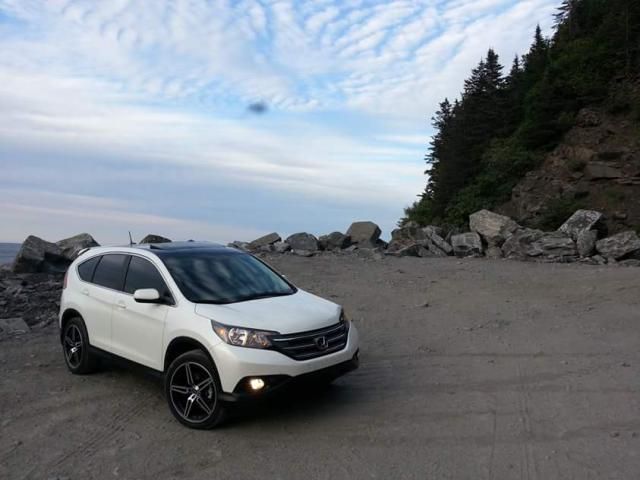
A melodic, howling, singing rumble is characteristic for the manifestation of a malfunction of the main pair.
The hum of a worn out main pair appears when you press the gas pedal (when moving to a load).
We press (we accelerate the car) on the gas pedal - a hum is heard
We release the gas pedal (engine braking mode) - the hum disappears.
Moreover, often, at the time of a load change (at the moment of lightly pressing the gas pedal, or releasing it), the sound can be significantly amplified, and at the initial stage of a malfunction, the hum can appear just in this mode (on a load change ), and at full load be absent or barely noticeable.
When driving in neutral gear (coasting), there is no or almost no this sound, in rare cases short, intermittent echoes of this sound are possible.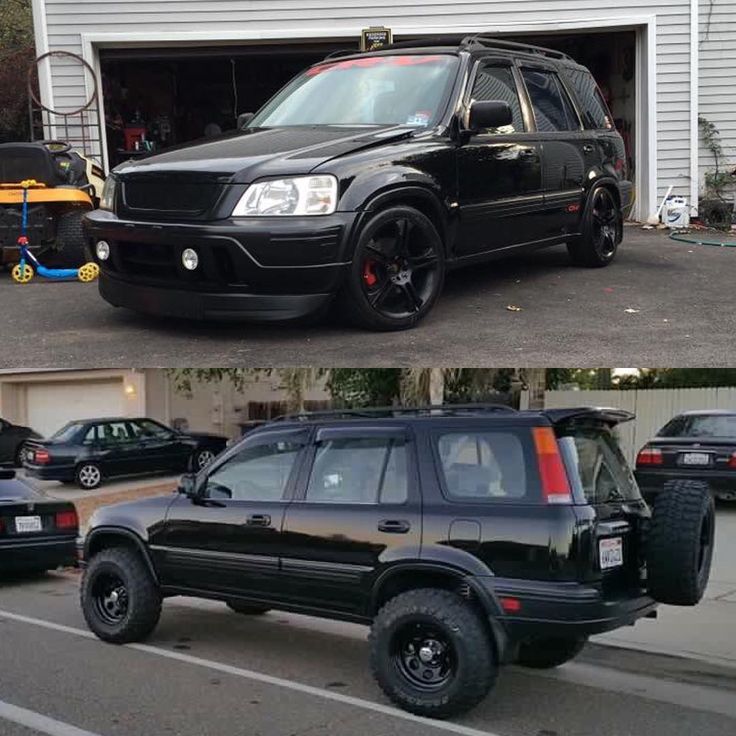
This rumble (of the main pair) usually appears (first noticeable) at medium speeds, in the range of 70-80 km / h, over time (due to the wear of the main pair) the speed bar at which the sound occurs decreases, and then the sound is heard already at 40-50 km/h. At speeds above 100-110 km / h, the hum seems to disappear - it is no longer audible.
If the hum that bothers you fully falls under this description, then its cause is definitely the wear of the main gearbox pair. No part in the car can buzz like that (only under load). Get ready for repair - replacing the main pair, or the gearbox assembly, if it is not possible to repair it. Adjusting the gearbox will not eliminate this hum. If someone promises you to eliminate this rumble by adjusting it, know that you are either being deceived, or this person has no idea about gearboxes.
At least 4 pieces are installed in any gearbox. On two bearings, the drive shaft of the gearbox (shank) rotates, on two - the driven shaft (differential).
Only the driveshaft bearings (shank) can hum, because they rotate 4-5 times faster than the wheels and differential bearings, and any sound caused by their wear due to the high speed of rotation merges into a hum.
Now we are talking about them:
“Buzzing” rumble, constant, monotonous, not disappearing in any driving mode, in all speed ranges.
Of course, at low speeds (when starting off and starting to move), it is often barely noticeable, almost inaudible, but it is there, as the speed increases, the hum intensifies and is already well audible from 20-30 km / h and up to 100 km / h . At high speeds, it already merges with aerodynamic noise and is almost invisible.
In advanced cases, on the contrary, at low speeds it becomes rough, crunchy, at the moment the car stops it turns into a crackling, crunching sound.
This is exactly what worn or overtight shank bearings make. BUT not only them. It looks like they can hum:
- propshaft outboard bearing
- hub bearing (both rear and front)
The exact reason (exclude outboard or hub) can only be determined by listening to the car in the inspection hole.
There is only one hint, if you have recently (from 2-3 days to a month ago) changed the shank oil seal of this gearbox, then 99% that the cause of this malfunction is just overtightened shank bearings due to unskilled actions when replacing the shank oil seal. 9 written about it0003 here.
Next, consider the rumble of differential bearings
The sound coming from faulty differential bearings is not even correct to call the rumble. This sound can be described as "crunchy" - it is intermittent (with the speed of the wheel - since these bearings rotate simultaneously with the wheel), sizzling, not melodic, it often seems that something is touching, grinding in the bridge or working without lubrication, on dry. This sound can increase or decrease (disappear completely) depending on the change in the load on the car, or be constant - without changing from the load.
If the sound that bothers you falls under this description, then it may be just these bearings, BUT not only them.
In the same way (and often in 90% of cases) the bearings of the axle shafts of the drive axle are noisy.
Therefore, it is possible to determine the exact reason (to exclude the axle shaft bearings) only by listening to the car in the inspection hole. There is no need to try to ask another person via the Internet or by phone that it is buzzing with you. You can guess as much as you like in this case, there will be no exact answer.
First of all, this malfunction is very dangerous for the gearbox itself and for the operation of the car. Since on some models (VAZ, Niva and some foreign cars) this nut does not have fixation (punching) and, when unscrewed, releases the shank from displacement into the depth of the gearbox, which, firstly, is very harmful for the main pair (it wears out rapidly), and secondly, over time leads to the fact that the shank hits the differential and the bridge wedges, or the teeth on the shank break.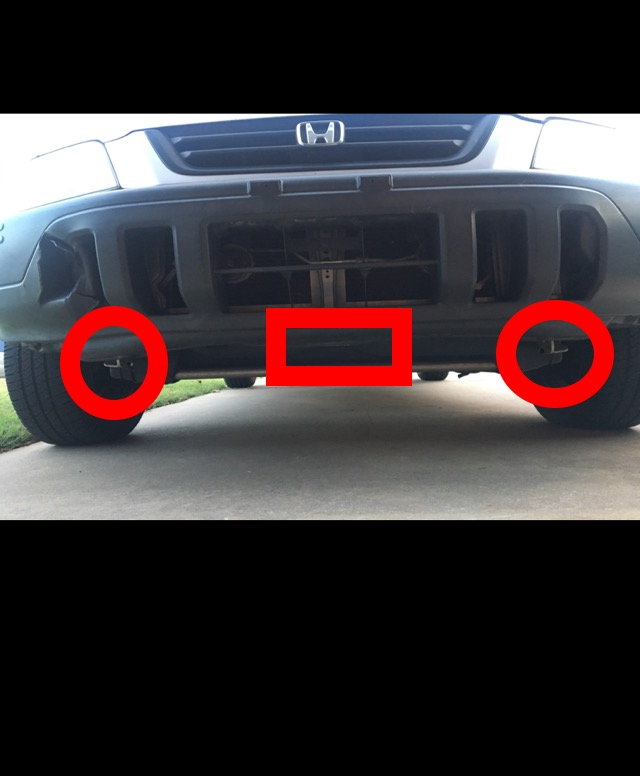
Therefore, this malfunction must be eliminated as soon as possible - on the same day as it was discovered. You can't plan a long trip!
* Not only a loose shank nut can cause this sound, but also wear (natural or critical, emergency) of the shank bearings. This wear leads to axial "play" (displacement) of the liner when the gas is released, and the return of the liner to the calculated (working) position (in engagement with the main pair) under load.
The hum of this malfunction resembles a trolleybus approaching a stop.
While we press the gas pedal (we accelerate the car) - there is no rumble
hum.
When coasting, there is a hum, but it is light, “rustling”.
If your hum falls under this description - you urgently need to at least tighten the nut (do not overtighten it !!! as mentioned above), and in your mind - replace the stuffing box and spacer, especially since this malfunction in most cases accompanies the leakage of the stuffing box.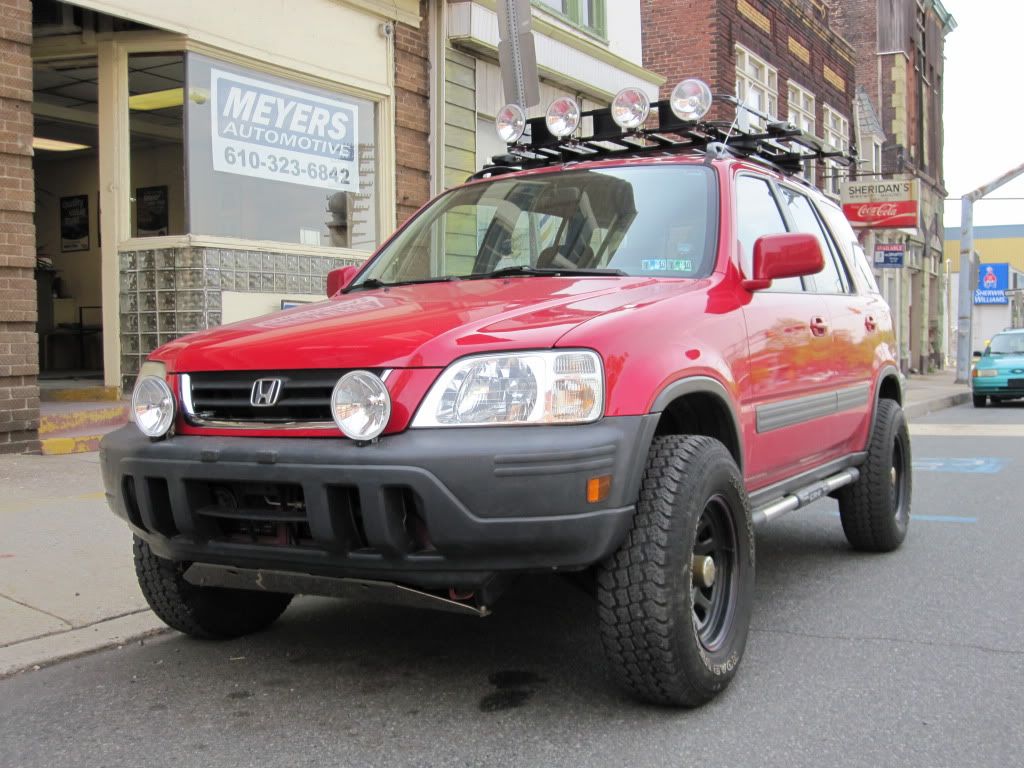
The hum of an unadjusted gearbox cannot be clearly described (it differs depending on the degree of misalignment). But most often it is a hum that is absent when coasting (in neutral) and appears at the same speeds in both modes (both in tightness and when engine braking).
This fault is most often suspected by owners of cars with a humming axle and just as often by car service workers. Every day and more than once, you have to convince customers that the cause of the hum is not in the adjustment.
The gearbox is adjusted (according to the basic adjustments - affecting the noise of operation) once and forever (for the entire period of its service life). It does not require scheduled adjustment, with the exception of adjustment to reduce backlash.
Since the main pair, when it is installed in the gearbox, is installed in one single position - the correct position for this particular part, neither lower nor higher, nor to the left or to the right.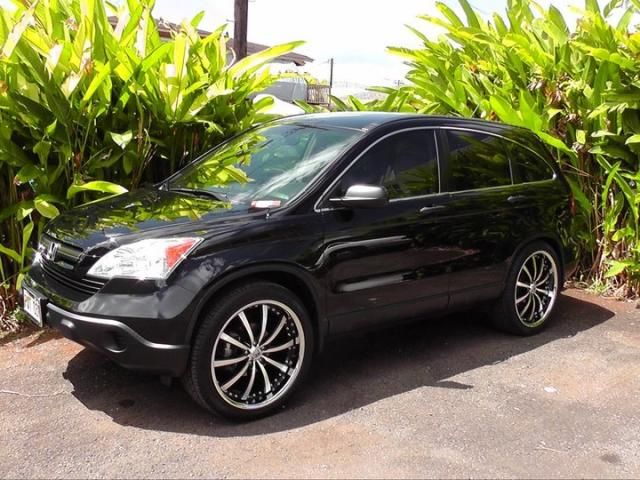 All the subtlety of the adjustment lies precisely in the professionalism of the master to find this only position for this part - this guarantees a long service life and quiet operation at the same time. A non-professional master will install a pair as it happened (and it will do so ... (s)), and the gearbox will work noisily and not for long.
All the subtlety of the adjustment lies precisely in the professionalism of the master to find this only position for this part - this guarantees a long service life and quiet operation at the same time. A non-professional master will install a pair as it happened (and it will do so ... (s)), and the gearbox will work noisily and not for long.
It's almost like a wheel alignment on a car. It is necessary to put the wheels in a strictly defined position (with the right angles) - this guarantees a long service life of the rubber and the noiselessness of its operation (in corners).
But if with wheel alignment it often happens that it "leaves" by itself - due to wear of the same rubber silent blocks or deformation of the body, then this does not happen with the adjustment of the gearbox. An initially adjusted serviceable gearbox can work hundreds of thousands of kilometers and even at such a run it will not need adjustment.
So... if initially the gearbox on your car did NOT hum (by default, we assume that it did not hum, because your car was once new and in 99% of cases the gearbox on such machines does not hum from the factory - with the exception of the domestic auto industry), and in for a moment it buzzed, then no adjustment that appeared will eliminate the hum.
But what if your gearbox was initially not adjusted correctly???
It's getting late.
If your wheel alignment/camber is set incorrectly and you run 20.000 km, what will happen to the tires??? - it will wear out (and much earlier). Of course, the collapse will have to be done, but with new tires.
So it is with the gearbox (despite the fact that the gears of the main pair are not rubber, but metal, but they also experience much greater loads). Of course, adjustment will be required - but already for the new main pair. Something can still be corrected with a run of up to 1,000 - 2,000 km, with a run of over - the pair already has output, which can no longer be corrected by adjustment.
Therefore - if your gearbox did not initially hum - then the hum appeared - for repair, and not for adjustment.
If you repaired the gearbox yourself and it immediately buzzed, then you need to make its adjustment, and preferably urgently, until the main pair failed, of course, provided that it was in good order at all when it was installed.
Often* self-purchased main pair is no longer suitable for operation - due to marriage or the fact that it is "restored". This pair cannot be adjusted.
* True for domestic vehicles.
Please do not ask to determine at a distance "what could it be?". This page has been created to help you make a preliminary self-diagnosis of . In order to start looking for a malfunction in the car in the right direction (to avoid the situation when a unit / part was repaired that is not related to the problem being sought).
This does not mean at all that we are supporters of the fact that it is possible to replace a full-fledged diagnostic with a question asked (and an answer received) here!
We do not carry out diagnostics at a distance (by phone/via the Internet)!!!
If you need advice - we are ready to help you, but VERY BIG REQUEST - ask a meaningful question (with the technical data of the car, a detailed description of the hum (type of hum), how it appeared, etc.